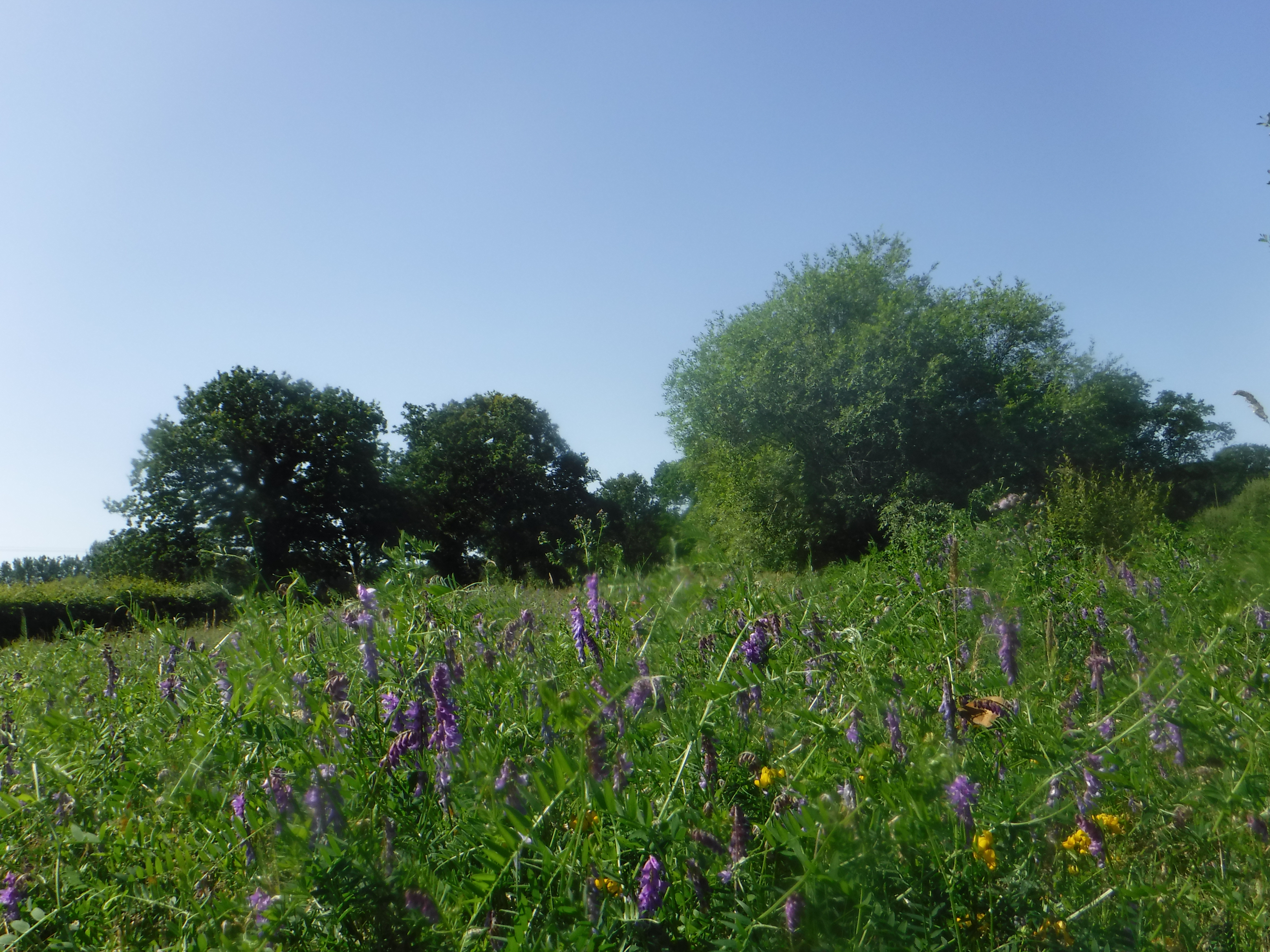
Total monthly rainfall: 132.5 millimetres. Maximum daily rainfall: 72 millimetres (26th July).
There were 16 days when measurable rain fell, and 50 mm of the rain recorded on the morning of the 26th fell in two and three quarters of an hour on the afternoon of July 25th, accompanied by a thunderstorm and sleet. There was 100% cloud cover for at least part of 16 days.
Maximum temperature on the warmest day was 29°C on July 21st, and there were 5 days on or above 25°C. Maximum temperature on the coldest day was 16C on the 10th, and there were 4 days below 20°C.
Wildflowers first seen this month were tall melilot on the 1st , creeping thistle on the 2nd, and marsh woundwort on the 4th. A few days later, ragwort began to appear (10th) closely followed by white convolvulus (11th), bristly oxtongue (12th), great willowherb and water plantain (14th), plus honeysuckle, knapweed, and rough hawkbit on the 15th. Nearly a week later we discovered agrimony (21st), fleabane and red bartsia (22nd), with watermint on the 26th. On that same day, our back woodland pond flooded and overflowed, while on the 28th we began de-heading creeping thistles and controlling bristly oxtongue. The 15 wildflowers recorded this month brings our running total to 58.
-
 Emerald damselfly
Emerald damselfly
Emerald damselfly
Emerald damselfly
-
 Great willowherb
Great willowherb
Great willowherb
Great willowherb
-
 Tufted vetch in wildflower meadow
Tufted vetch in wildflower meadow
Tufted vetch in wildflower meadow
Tufted vetch in wildflower meadow
-
 White convolvulus
White convolvulus
White convolvulus
White convolvulus
https://www.kentfieldclub.org.uk/news/little-barton-farm-wildlife-notes/nature-notes-july-2021#sigProId0a54fe490a
Five new species of butterfly seen this month mean that we have reached 16 species for the year so far. On the 1st we saw two marbled whites, followed by a large white on the 2nd, and a small skipper on the 3rd. A further group consisting of a white admiral on the 14th, gatekeeper on the 16th, and silver-washed fritillary on the 17th make 17 species for the year so far.
Although we have seen many repeat sightings of silver Y, yellow shell, and grass moths we have only recorded the blood-vein moth on July 3rd . Our annual total is now 21 species.
This month we recorded 5 new species of dragonfly, bringing our total to 18. On July 2nd we recorded a mature ruddy darter, indicating that we had missed it earlier. On the 10th we saw a willow emerald, but had to wait until the 16th before spotting a brown hawker. On the 18th we found an immature emerald damselfly, then unexpectedly found 3 very late migrant hawkers on the morning of July26th.
Remaining sightings of interest were of a grass snake attacked and killed by the Canada geese on the 15th; swarms of midges almost everywhere on the 18th; the Canada geese and their goslings left us on the 19th, but unlike last year, have not yet returned; and twenty swallows flying from nearby electricity cables to catch insects over our lake on July 30th. Apart from that we have received no sightings beneath our reptile shelters except slugs and ants.

